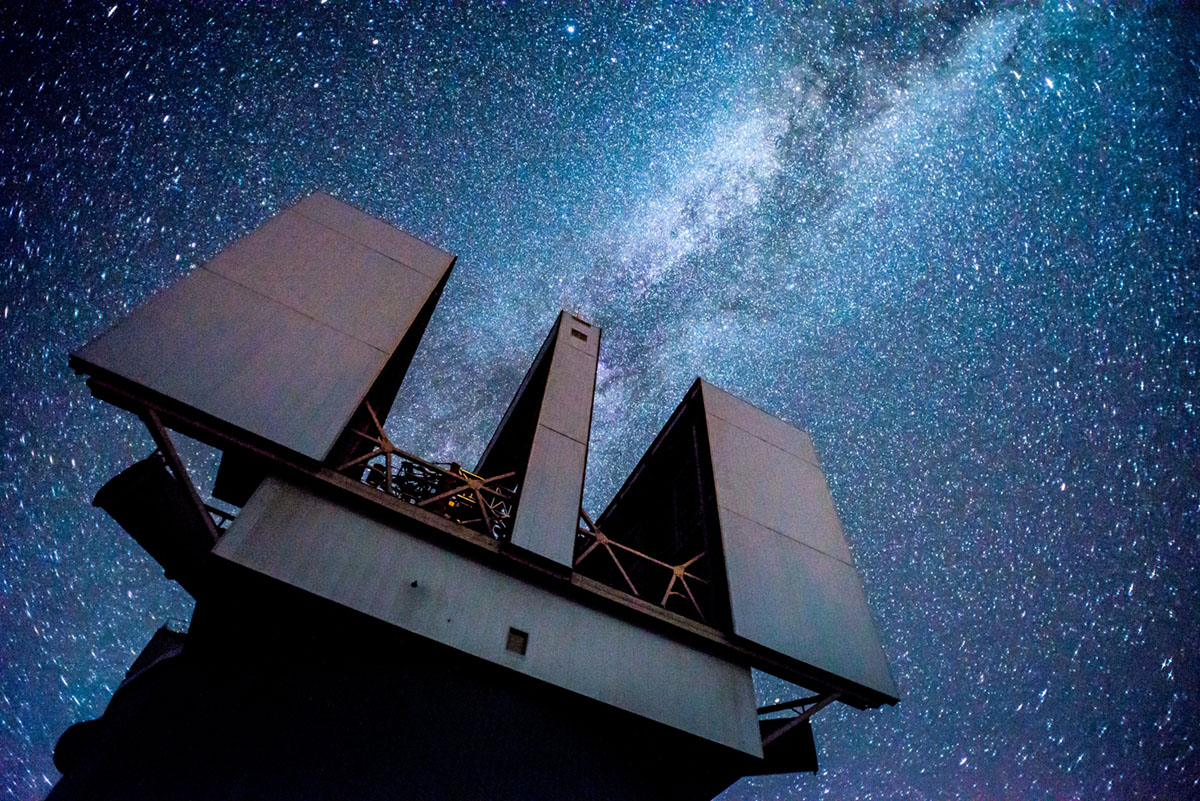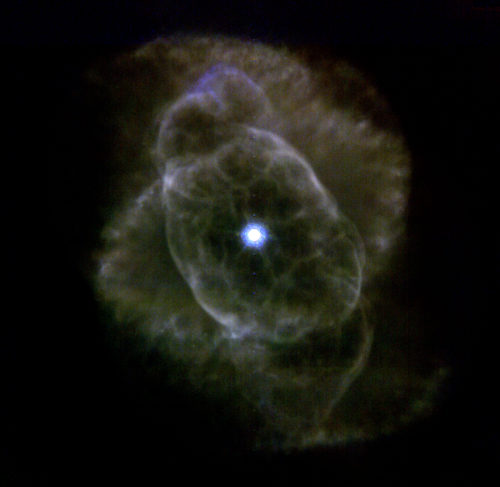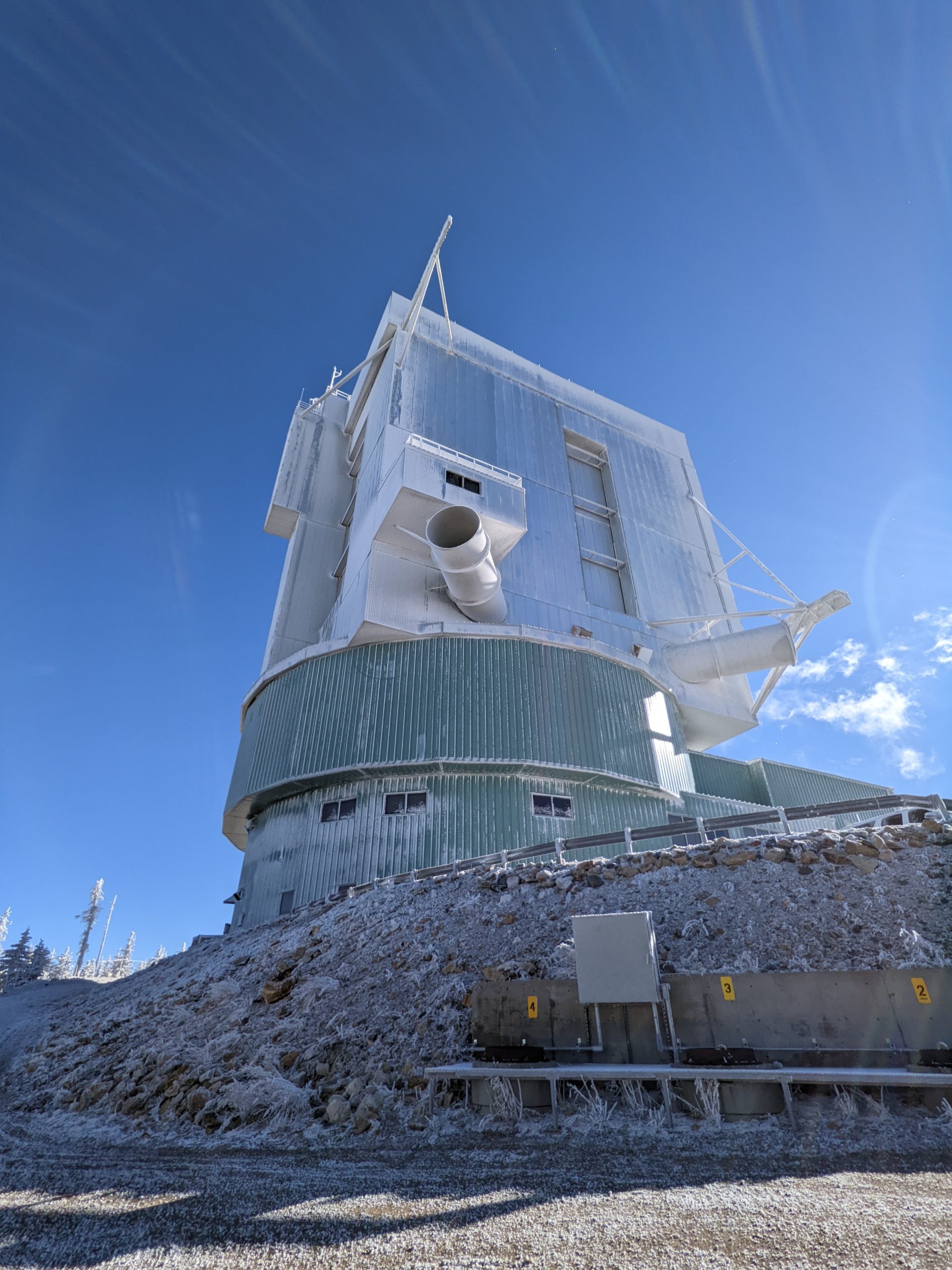LBTO Science Operations
Welcome to the Science Operations Web Pages for the Large Binocular Telescope Observatory (LBTO), an international collaboration among institutions in the United States, Italy and Germany. LBT Corporation Members are: The University of Arizona on behalf of the Arizona university system; Istituto Nazionale di Astrofisica, Italy; LBT Beteiligungsgesellschaft, Germany, representing the Max-Planck Society, the Astrophysical Institute Potsdam, and Heidelberg University; The Ohio State University, and The Research Corporation, on behalf of The University of Notre Dame, University of Minnesota and University of Virginia.

Large Binocular Telescope – Image complements of Ryan Ketterer
Located on the summit of Mt. Graham, LBTO aspires to be the first of the ELTs and one of the leading 8-m class telescopes. Comprised of privately funded or national institutes and consortiums of universities, the goal of LBTO and its partners is to ensure that its community of users are receiving the highest-quality astronomical data.
On these pages you will find the information needed to prepare for observations or writing proposals and details about the instruments available.
Additional details about the Mt. Graham International Observatory (MGIO) site can be found on the MGIO web pages. Additional technical details about the mechanics and optics of the Large Binocular Telescope can be found on the main LBTO website.
About the Telescope, Support Staff, and the Instruments

View of the SX (Left side of the telescope) taken closed dome by S Allanson, LBTO
The About and Instrument sections provide the users a plethora of information about the science capabilities available at the LBT, and information about the Support resources available. Detailed information is included for our Facility and PI instruments, both capabilities and use.
About Proposal Submission and Script Preparation

Cat’s Eye Nebula with SOUL LUCI1 AO in Ks H2 FeII – B.Rothberg, LBTO
In addition to the About LBTO and Instrument Pages, LBTO has developed a Phase I Tool (PIT) for Proposal Submission which is used by a number of our partners. LBTO Observing Tool (OT) is a tool that allows users to create complex and detailed observing scripts for our facility instruments. This tool allows users to visualize their science script generation.
About observing at our Facility, Obtaining your Data, and Data Dissemination

LBTO Facility – Image compliments of J. Crass, Notre Dame
Whether observing remotely, onsite, or in queue, there are a number of useful tools and links to help prepare for observing runs, monitor the site and weather, etc under Observing with the LBT. Data is accessed in real time through our data archive. Pipelines are in development by various institutions and instrument PI’s.
LBTO Instrument News
MODS Controller Upgrade
MODS Controller Upgrade – Instrument Availability Delayed
update: Dec 29th
The MODS instruments underwent controller upgrades this summer, replacing the legacy head electronics and a set of aging computers. These upgrades were carried out to ensure the long-term reliability, robustness, …
MODS2 Mask Cassette Issues
On the night of June 26 UT when moving the 2.4″ longslit into the focal plane, the mask failed to insert into the focal plane despite the software thinking so. When the instrument was opened, the grabber was found to …
... Read MoreMOS Mask Milling Machine Issue – Resolved
April 11, 2025: Problem with the oxygen regulator was found and resolved. The MOS mask milling machine has been returned to operation.
April 9, 2025: The laser for the MOS mask milling machine recently stopped working. Currently all mask milling …
| Status | Instrument | Notes |
|---|---|---|
| 🟢 | LBC BLUE | |
| 🟢 | LBC RED | |
| 🟢 | LUCI1 | Intermittent instabilities in the G210 grating have been noted. SL released for science, ESM and Full AO imaging modes released for science. |
| 🟢 | LUCI2 | N1.8 occasionally fails to properly reach the detent position. SL released for science, ESM and full AO imaging available for science. |
| 🔴 | MODS1 | Underwent controller upgrade this summer. Unavailable until December while work continues. |
| 🔴 | MODS2 | Underwent controller upgrade this summer. Unavailable until December while work continues. |
| 🟢 | PEPSI PFU | |
| 🔴 | PEPSI POL | Uninstalled Nov 20. |
| 🟠 | LBTI | NOMIC unavailable. |
| 🟢 | SHARK NIR | |
| 🟢 | SHARK VIS |





